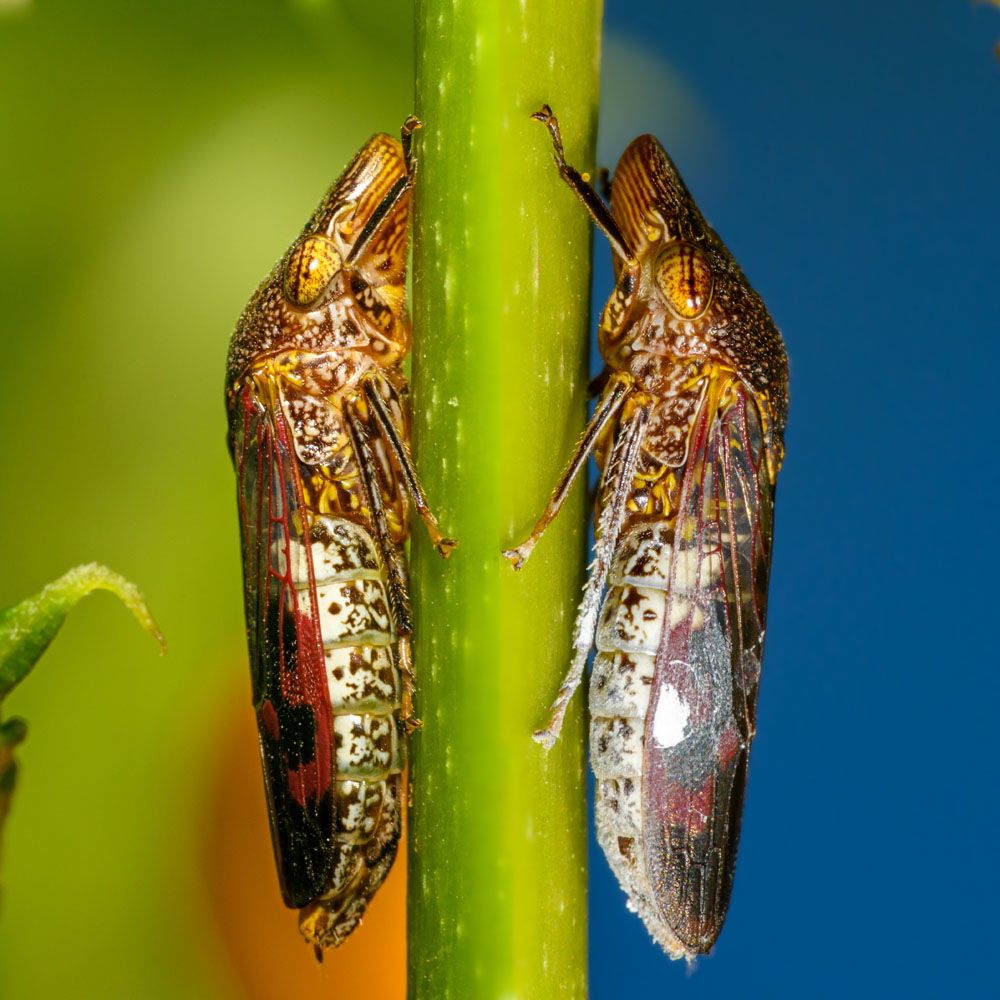
Glassywinged Sharpshooter – Homalodisca coagulata
Glassy Winged Sharpshooter: Appearance, Territory, Damage and Life
Latin name: Homalodisca coagulata
Appearances: The glassy-winged sharpshooter is around 12 mm long, predominantly dorsal brown in hue, and has under-abdomen ivory and black patterns. Glassy-winged sharpshooters can spread plant diseases farther than other vector leafhoppers like the blue-green leafhopper because they have broad, smoky-brown wings with red patterns and are excellent flyers. Atropunctata graphocephala (Signoret). The glassy-winged sharpshooter has yellow-orange legs and a face. Nymphs share the same body form as adults and lack wings.
Host plans: A vast range of plants are consumed by the glassy-winged sharpshooter. Over 70 different plant types, according to scientists, serve as the host plants for this sharpshooter. Grapes, citrus trees, almonds, stone fruit, and oleanders are a few of the hosts.
Territory: It was mistakenly introduced into Southern California in the early 1990s, perhaps with agricultural or ornamental stock, despite being native to North America (northeastern Mexico). It has developed as a pest in agriculture, particularly in winemaking.
Damage insect caused: Fruit becomes discolored by insect excretions that harden on it and must be washed after harvest to be removed. Nymphs consume stems, removing as much xylem fluid per hour as their body weight. The plant may get weaker due to fluid loss.
Large amounts of sticky material released as thin droplets are one of the earliest signs of glassy-winged sharpshooter infestation. Only under the infected tree can the droplets mimic rain; otherwise, they take on the appearance of white-wash when they dry.
Life cycle and habits: The glassy-winged sharpshooter’s female lays her eggs in clusters of three to 28 just beneath the epidermal layer of a few carefully selected leaves. Holly, sunflower, and citrus are some of the preferred oviposition plants. The selection of plants for oviposition is thought to be influenced by the strict nutrient needs for young nymphs. A white substance scraped from deposits on the female’s fore wings is used to cover her eggs as she lays them. The name for these hydrophobic particles with a complex structure in a white powder is brochosomes. Leafhoppers excrete brochosomes to cover their bodies and egg masses because they are formed in specific secretory segments of the malphigian tubules. However, not every stage of the life cycle results in the same production of brochosomes. Homalodisca vitripennis and other species of the tribe Proconiini have females that, like males and nymphs, create spherical brochosomes up to mating.
